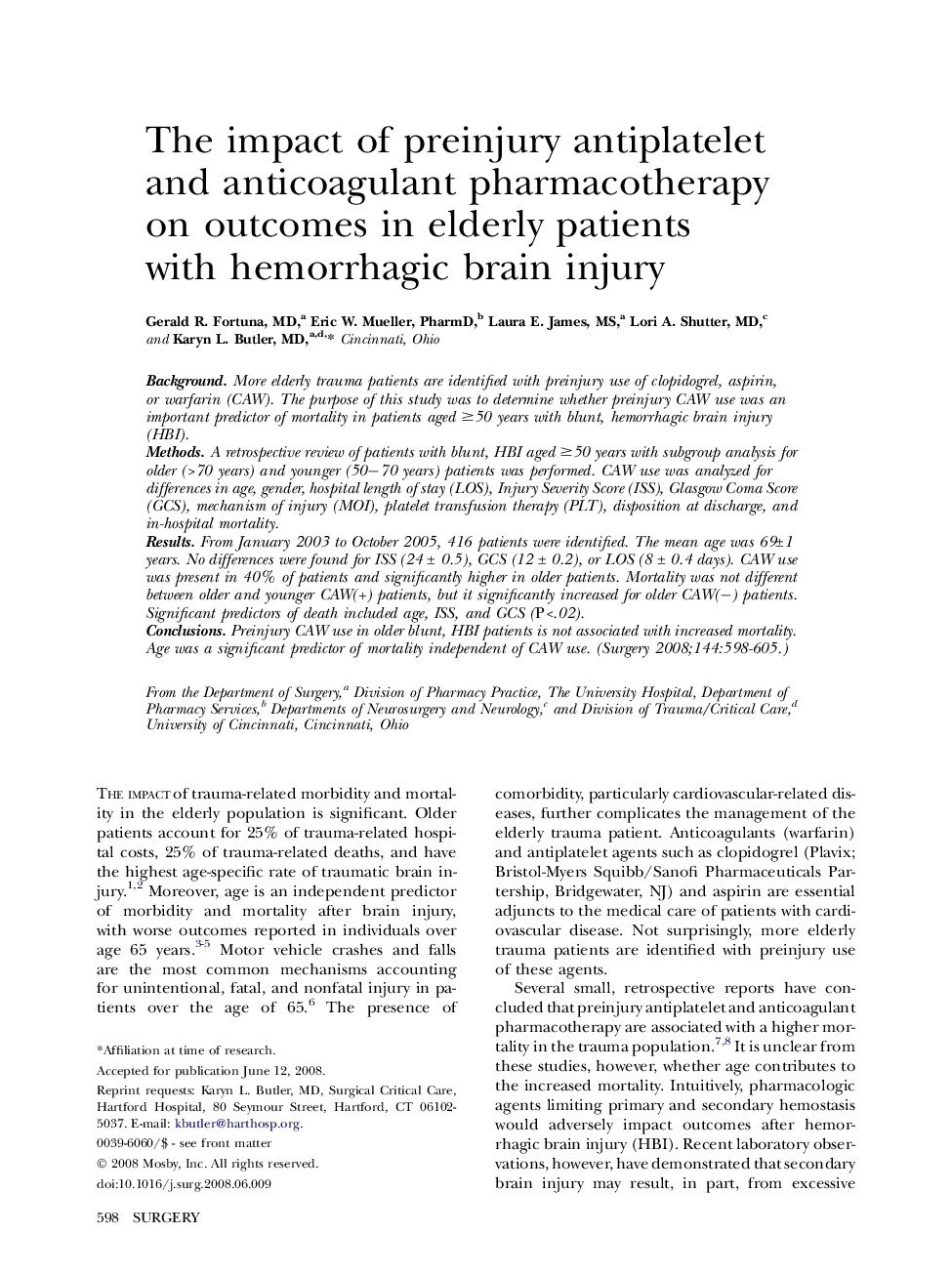| Article ID | Journal | Published Year | Pages | File Type |
|---|---|---|---|---|
| 4309792 | Surgery | 2008 | 8 Pages |
BackgroundMore elderly trauma patients are identified with preinjury use of clopidogrel, aspirin, or warfarin (CAW). The purpose of this study was to determine whether preinjury CAW use was an important predictor of mortality in patients aged ≥50 years with blunt, hemorrhagic brain injury (HBI).MethodsA retrospective review of patients with blunt, HBI aged ≥50 years with subgroup analysis for older (>70 years) and younger (50−70 years) patients was performed. CAW use was analyzed for differences in age, gender, hospital length of stay (LOS), Injury Severity Score (ISS), Glasgow Coma Score (GCS), mechanism of injury (MOI), platelet transfusion therapy (PLT), disposition at discharge, and in-hospital mortality.ResultsFrom January 2003 to October 2005, 416 patients were identified. The mean age was 69±1 years. No differences were found for ISS (24 ± 0.5), GCS (12 ± 0.2), or LOS (8 ± 0.4 days). CAW use was present in 40% of patients and significantly higher in older patients. Mortality was not different between older and younger CAW(+) patients, but it significantly increased for older CAW(−) patients. Significant predictors of death included age, ISS, and GCS (P<.02).ConclusionsPreinjury CAW use in older blunt, HBI patients is not associated with increased mortality. Age was a significant predictor of mortality independent of CAW use.
